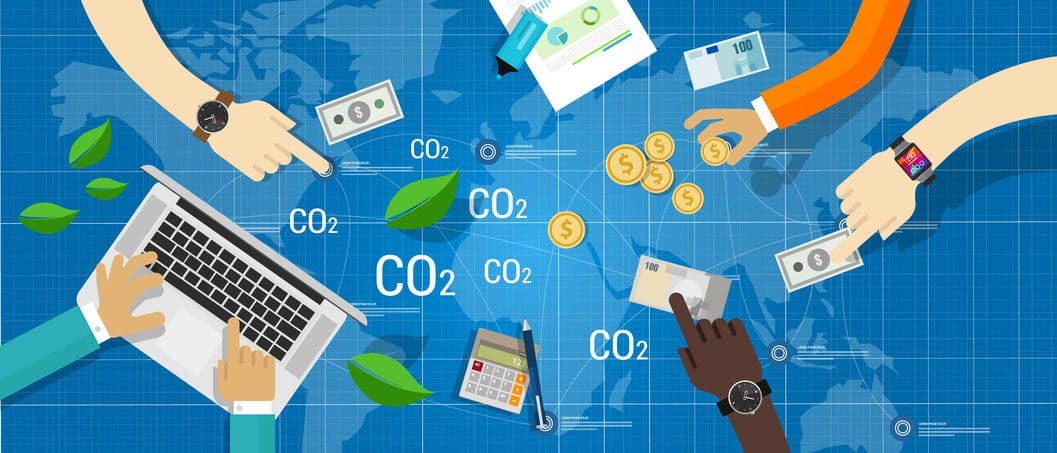Internal Revenue Code (“Code”) §45Q allows taxpayers a credit against income tax for carbon oxide sequestration activities. This bipartisan legislation is backed by various stakeholders, including federal and state government agencies, major oil companies, engineering firms, start-ups and private equity investments. Initially enacted in 2008 (P.L. No. 110-343, §115), this legislation has lingered with minimal guidance and short-sunsetting provisions, which tend to temper investor appetite for robust participation. This legislation received a jumpstart in the Bipartisan Budget Act of 2018 (P.L. 115-123, February 9, 2018). Following this lead, the Internal Revenue Service (IRS) recently issued Notice 2019-32 requesting comments on the implementation of this environmental-friendly legislation in pending regulations.
What are Carbon Sequestration Credits?
This credit rewards taxpayers that “[C]apture qualified carbon dioxide (“CO2”) at a qualified facility and dispose of the CO2 in a secure geological storage within the United States.” This definition was expanded in 2018 for post-2017 activity, which now includes CO2 used as a tertiary injectant in a qualified enhanced oil and natural gas recovery project (among others) and properly disposed of in a secure geological storage. Additionally, credits are allowed during the 12-year period beginning on the date carbon capture equipment is originally placed in service.
Credit Against What?
A tax credit is generally more valuable than a deduction because a deduction may offset taxable income at the taxpayer’s marginal tax rate (ex., 21%, 37%, etc.) whereas a credit offsets tax that has been calculated dollar-for-dollar.
This §45Q credit is part of the §38 General Business Credit (GBC) mechanism. GBCs are aggregated and limited, generally, to 25% of a taxpayer’s net regular tax liability in excess of $25,000. For individuals subject to the Alternative Minimum Tax, another limitation applies that is beyond the scope of this discussion. Any excess credit may be carried back one year or carried forward 20 years under §39(a)(1).
Basic Rules
Credits are generally allowed per metric ton of qualified carbon oxide captured and stored at a rate of $10 to $20 per ton (/ton), depending on the use of the captured carbon oxide in tertiary injectants or not. Other rates of up to $50/ton apply with respect to additional storage choices, and these rates are subject to annual inflation adjustments. This legislation borrows heavily on regulations and concepts from other U.S. government agencies such as the Environmental Protection Agency (EPA), the Department of Energy and the Department of the Interior, among others. In particular, heavy focus is placed on determining the adequacy of security measures for the geological storage of qualified carbon oxide in facilities such as deep saline formations, oil and gas reservoirs and unminable coal seams.
Carbon Sequestration Credit Reporting
IRS Form 8933 is the mechanism that allows taxpayers to claim this credit. In particular, this reporting requires a reconciliation between the credits claimed on the form with the taxpayer’s EPA reporting under the Greenhouse Gas Reporting Program. Additionally, qualification is affected by a taxpayer’s Underground Injection Control program classification.
Request for Comments
The IRS is asking for comments on regulations to be issued on several technical items related to engineering control and measurement standards, overlap with EPA rules (including reliance on an EPA-approved Monitoring, Reporting and Verification Plan), recapture provisions, definitions and when is construction commenced. Additionally, what circumstances should be present allowing investors whom are not otherwise actively engaged in capture and storage to avail themselves of this credit? The comment period is for 45 days beginning on May 20, 2019.
Conclusion
This initiative seems to have a surprisingly broad coalition of constituents and Congressional sponsors. Let’s hope that some real progress can be made at a better rate than the first 10 years of its life and not remain bogged down in political or engineering turf wars.
W. Lynn Loden, CPA, is a Managing Director at Opportune LLP. Prior to joining Opportune over 10 years ago, he reached the partner level in the Houston, Texas offices of Arthur Andersen LLP and Deloitte Tax, focusing on M&A, structured finance, and energy. He holds active CPA licenses in the States of Texas and Mississippi and currently holds FINRA Series 79 and 63 licenses.






